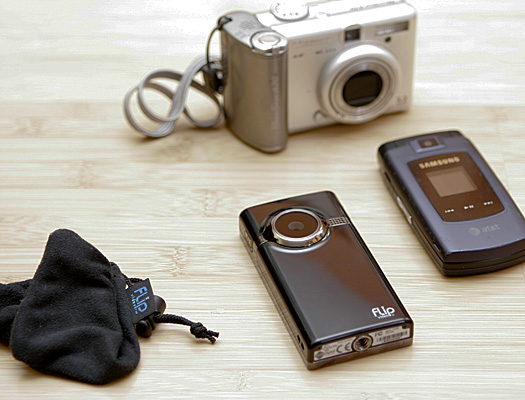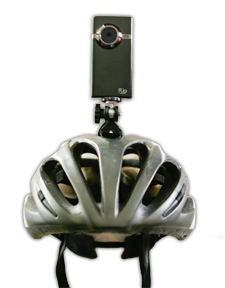Tech Review
We’ve all heard the lies. Heck, we’ve all told them. You should have been there:
“It was neck deep.”
“Double overhead.”
“Perfectly buff.”
“Bluebird!”
No, really, it was that good; but where’s the proof? I know that more often than not I don’t properly document the evidence of my backcountry adventures. I have one of three excuses:
- I didn’t have room in my pack for a camcorder/camera.
- I packed the camcorder/camera but didn’t feel like digging it out.
- I forgot the camcorder/camera.
The Flip Mino HD camcorder solves the first two excuses. Now, you can ALWAYS prove how sick it was (unless your story sounds better without images).
The Flip Mino HD is best used for non-POV (point of view) video from a relatively close distance from the subject.
Overview:
The Flip Mino (defunct link removed 2015) is the video equivalent of a point-and-shoot digital camera. It is virtually the same size as my cell phone. I tested the Flip Mino on a few mountain bike rides here in Colorado around Carbondale, and had no issues keeping the tiny camera in my shorts pocket. Suddenly I have instant access to record any and everything I deem fit.

The Flip Mino HD is about 1/8 inch larger than my cell phone.
Simplicity is the key to Flip Mino’s size. It has a non-user-replaceable Lithium-Ion battery that holds and approximately two hour charge with capacity for one hour of HD video. You get a small amount of digital zoom, but no moving lens. Controls are primarily Power, Record, Play and Stop buttons. The only real “extra” features to speak of are the tripod mount and flip-out USB connector.
Comparison:
The Flip line fills a small niche in the camcorder market; between helmet cams and more traditional HD camcorders. Helmet (and chest) cams with their wider angle lenses and lower profile bodies capture “rider’s eye” video that can be better for everything from ski touring to mountain running. But they aren’t easy to deploy then accurately frame a shot at moments notice. More traditional HD camcorders have better zoom options, white balance and exposure controls, and longer record times. But they can be bulky in a pant or jacket pocket (if they even fit), or when placed in a backpack that you don’t feel like digging through. Due to this, trad cams are often left at home, or remain in the bag. Flip models lack the wide angle and zoom options and have a limited video capacity, but take all when it comes to quick access.
Sample Videos:
Works great when the ride is steady…
…but not so well when things get rough. Both video above and below shot with Flip mounted to the bike frame.
Bouncing Bike POV from dave downing on Vimeo.

This should work, but watch out for low branches and wisecracking friends.
The zoom angle is a little too narrow for great POV, and accentuates every bump of the trail. A helmet or body mount (you’ll have to mod that yourself) would probably smooth the video out, but will be much more exposed than a normal helmet cam.
I’m looking forward to trying the Flip for skiing. So long as it holds up to the cold, I think it will make a great case for all my epic days…as long as I don’t forget it at home. And on those not so epic days? I can always say the batteries ran out — even if, yeah, it was neck deep blower best day of my life.
(Guest blogger profile: Dave Downing and his wife Jessica live in Carbondale, Colorado, where Dave is a freelance designer and owner of Ovid Nine Graphics Lab. Dave continues to hold the household Wii Ski Jump record.)
Dave “Snowman” Downing lives in Whitefish, Montana where Dave is a freelance designer and owner of Ovid Nine Graphics Lab Dave’s ski career began due to a lack of quality skiing video games for NES.
